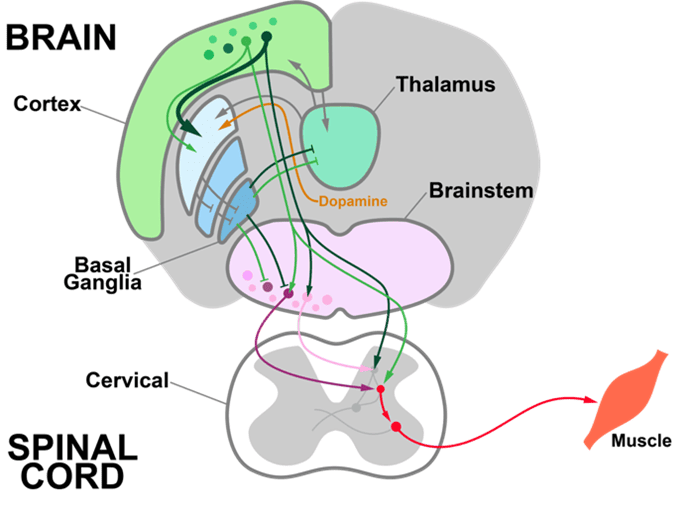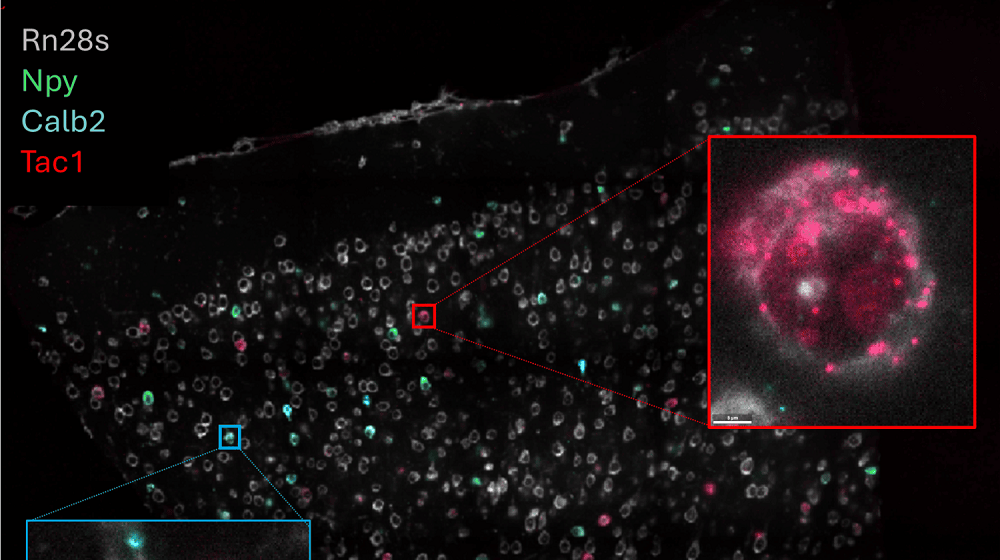Overview
The thalamus serves as a hub for routing sensory and motor information from subcortical brain regions to the cortex, playing a critical role in cognition, movement, and sleep/wakefulness. This multidisciplinary, collaborative project aims to uncover how neural signals are transmitted from subcortical brain regions via the thalamus to modulate cortical activity and thereby influence behavior. Our multi-institutional team is comprised of experts in state-of-the-art, high-throughput techniques spanning anatomy, molecular neuroscience, cellular and synaptic neurophysiology, large-scale neurophysiology in mice performing complex behaviors, and theory and computation. Overall, we aim to map the architecture of subcortex → thalamus → cortex circuits, measure functional relationships of these brain regions with cell type-specificity during cognitive behaviors, and synthesize these data to create conceptual and computational models towards a multi-regional neural circuit theory of cognition. To that end, we are releasing several resources and tools for the broader community, including quantitative anatomy, novel genetic reagents, neurophysiological data, and an extensive modeling framework to guide future studies of thalamic circuits.
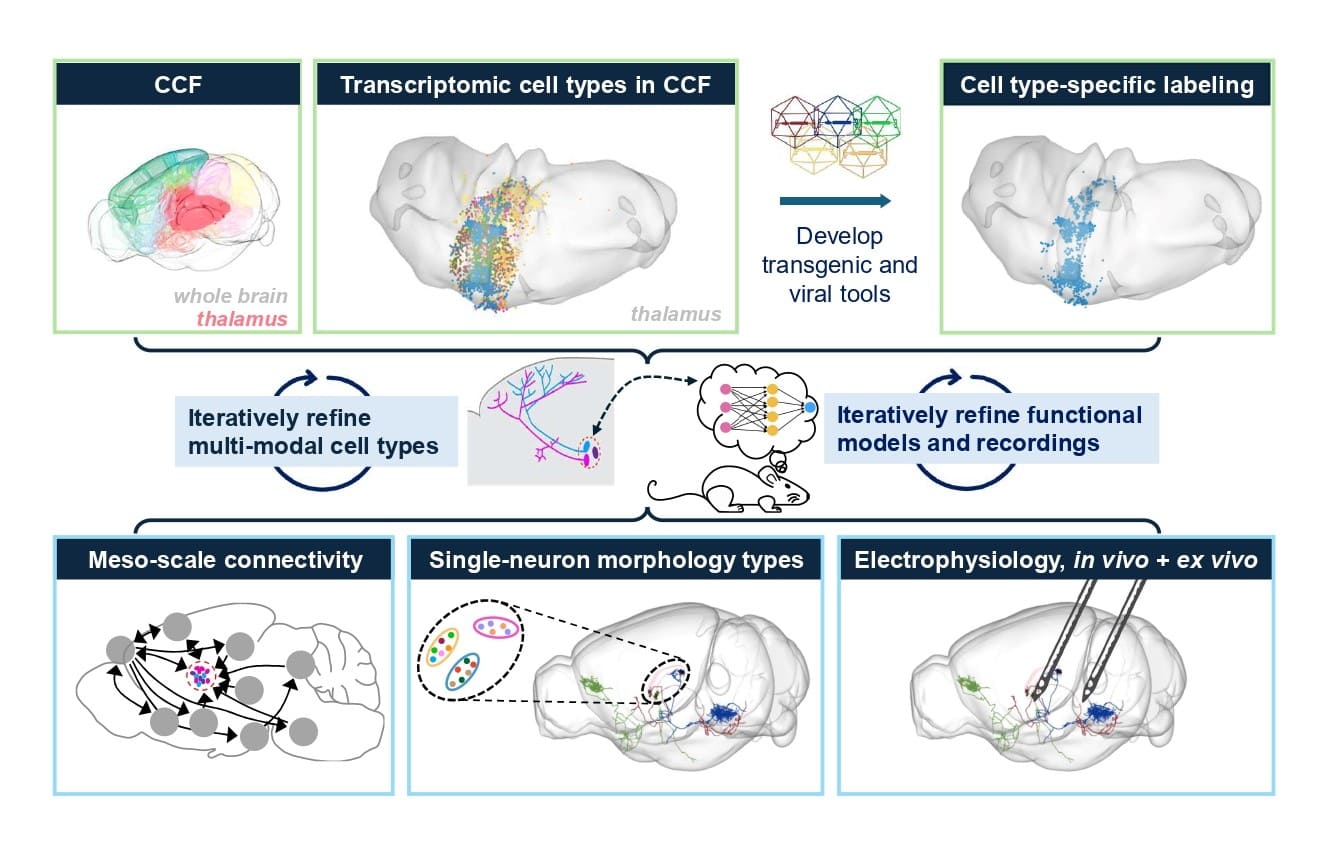
This work is partially funded by the National Institute of Neurological Disorders and Stroke (NINDS) and the National Institute on Drug Abuse (NIDA) under grant U19NS123714.
Molecular and cellular architecture of the thalamus
To understand the roles of thalamic cell types in driving specific actions, we aim to elucidate cell type-specific contributions to distinct aspects of cognition. To this end, we are leveraging single nucleus multiome data to identify cell type-specific enhancers and develop enhancer AAVs for thalamocortical populations. We are leveraging our custom ExA-SPIM platform combined with multiplexed spatial transcriptomics techniques to generate high-resolution, whole-brain reconstructions of single neurons, together with their unique gene expression profiles, to test and validate tools targeting cell types. These approaches allow us to link thalamocortical cell type information with morphological properties. These multi-modal datasets and enhancer AAVs enable accessing distinct thalamocortical cell populations, providing the foundation for cell type-specific characterization of multi-regional thalamic circuits.
Targeting thalamic nuclei with enhancer AAV vectors: Retroorbital injection of an AAV with an enhancer (AiE2253m) driving SYFP2 expression in mouse brain. The labeled region shows central thalamic nuclei, including PVT and CM. View this brain on Neuroglancer.

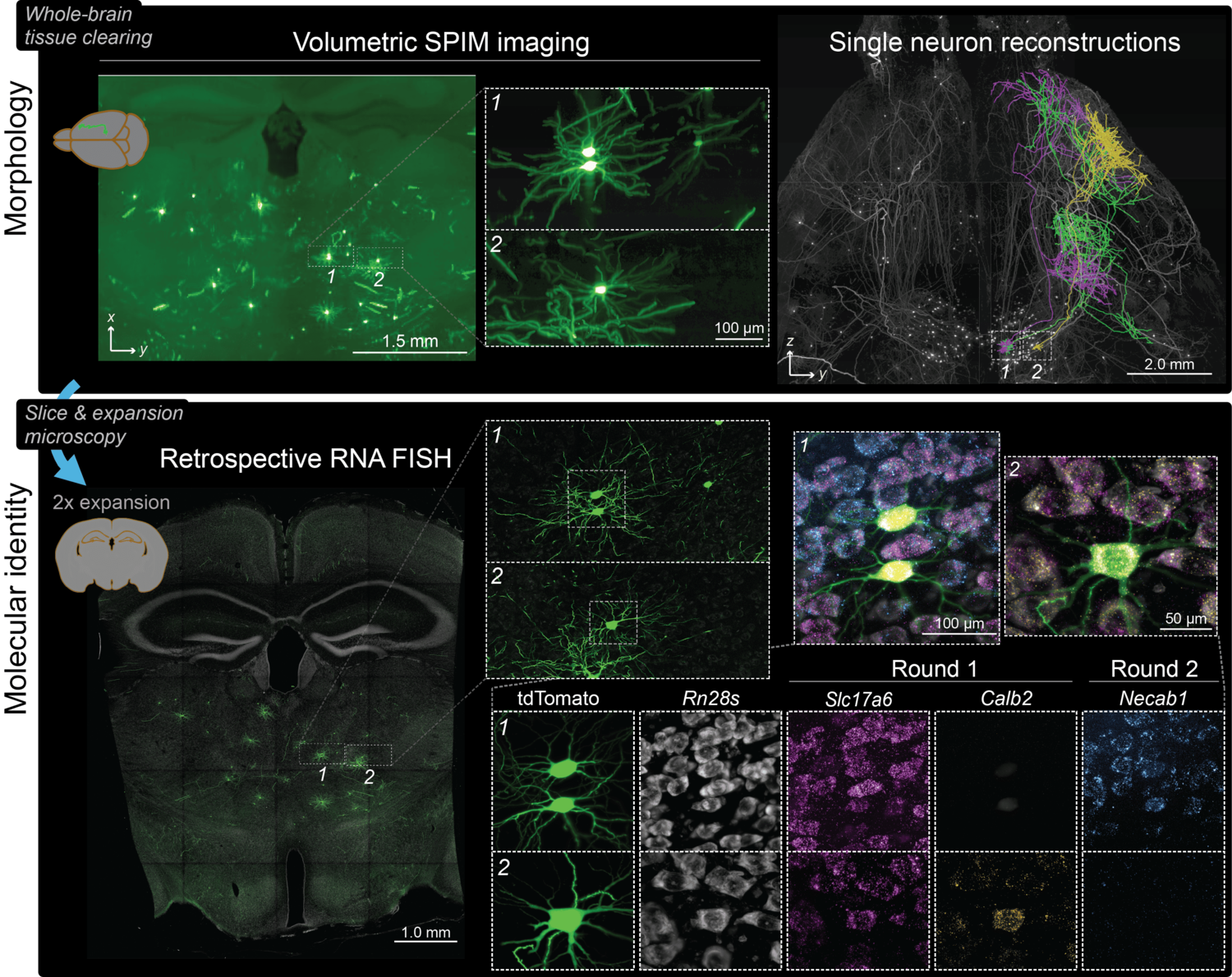
Anatomy and physiology of thalamic circuits
Uncovering how subcortical signals are routed through the thalamus to modulate frontal cortical activity and associated behaviors requires detailed mapping and functional characterization of thalamic circuits. We are using mesoscale anatomy to extensively map thalamic circuits connecting subcortical brain regions, non-sensory thalamus, and the frontal cortex. In parallel, we are utilizing brain slice electrophysiology and imaging combined with viral labeling approaches and optogenetic tools to assess the properties of defined subcortical-thalamic connections and their engagement of distinct frontal cortical networks. Together, these datasets establish the organization and properties of connections from subcortical inputs to higher-order thalamus and, in turn, to frontal cortex.
Whole-brain retrograde tracing of thalamocortical neurons: Three color whole-brain retrograde tracing experiment. Injections of AAVrg-H2B-XFP are made in frontal cortex, and retrograde labelling reveals organization and topography of thalamic projections to those injection sites. View this brain on Neuroglancer.
Dynamics of multi-regional thalamic circuits during behavior
Applying our knowledge from the anatomical and molecular datasets, we aim to understand the dynamic interaction of thalamic signal routing from subcortical regions to the frontal cortex during flexible behaviors. Such complex behaviors are associated with intricate neural activity patterns that are comprised of a sequence of cortical activity modes. We employ two behavioral tasks in mice that engage well-defined but distinct cortical activity modes. In a memory-guided response task, neurons in the anterior lateral motor cortex (ALM) display preparatory activity predictive of future movements. Just before the onset of movement, preparatory activity collapses in favor of activity modes that drive movement. In a dynamic foraging task, neurons in the medial prefrontal cortex (mPFC) display slowly varying activity patterns that correlate with the value of a specific action. This activity pattern is updated based on new information, such as the size of a reward. In combination with our modular insertion system and optogenetic methods, we are performing simultaneous Neuropixels recordings during these behaviors to understand how subcortical signals propagate through the thalamus into the cortex across defined neural circuits. Ultimately, these datasets inform and test key predictions central to multi-regional, thalamic circuit models of cognition.
.png)
Multi-regional computational models of thalamic circuits
To interpret our anatomical, molecular, and behavioral datasets, we are developing theoretical frameworks that establish the relationship between subcortical → thalamic → cortical circuits to memory, learning, and decision-making. Specifically, we have defined population-level activity modes that succinctly describe cortical dynamics relevant to computations underlying movement planning and foraging. In parallel, we have developed a data-driven framework for a more mechanistic characterization of multi-regional neural activity underlying decision making. By incorporating anatomical, molecular, and physiological data, these data-constrained models will capture salient neurophysiological and behavioral results, including a mechanistic link between the two. We applied this model to Neuropixels recordings of ~66,000 neurons, spanning various cortical and subcortical brain regions during behavior. Overall, these computational models can be used to determine possible neural mechanisms underlying key aspects of complex behaviors and provide testable predictions for future studies that include thalamic circuits. Comprehensive anatomy, physiology, transcriptomic, and behavioral datasets, along with our genetic tools, can refine these models and ultimately drive discovery by the scientific community.
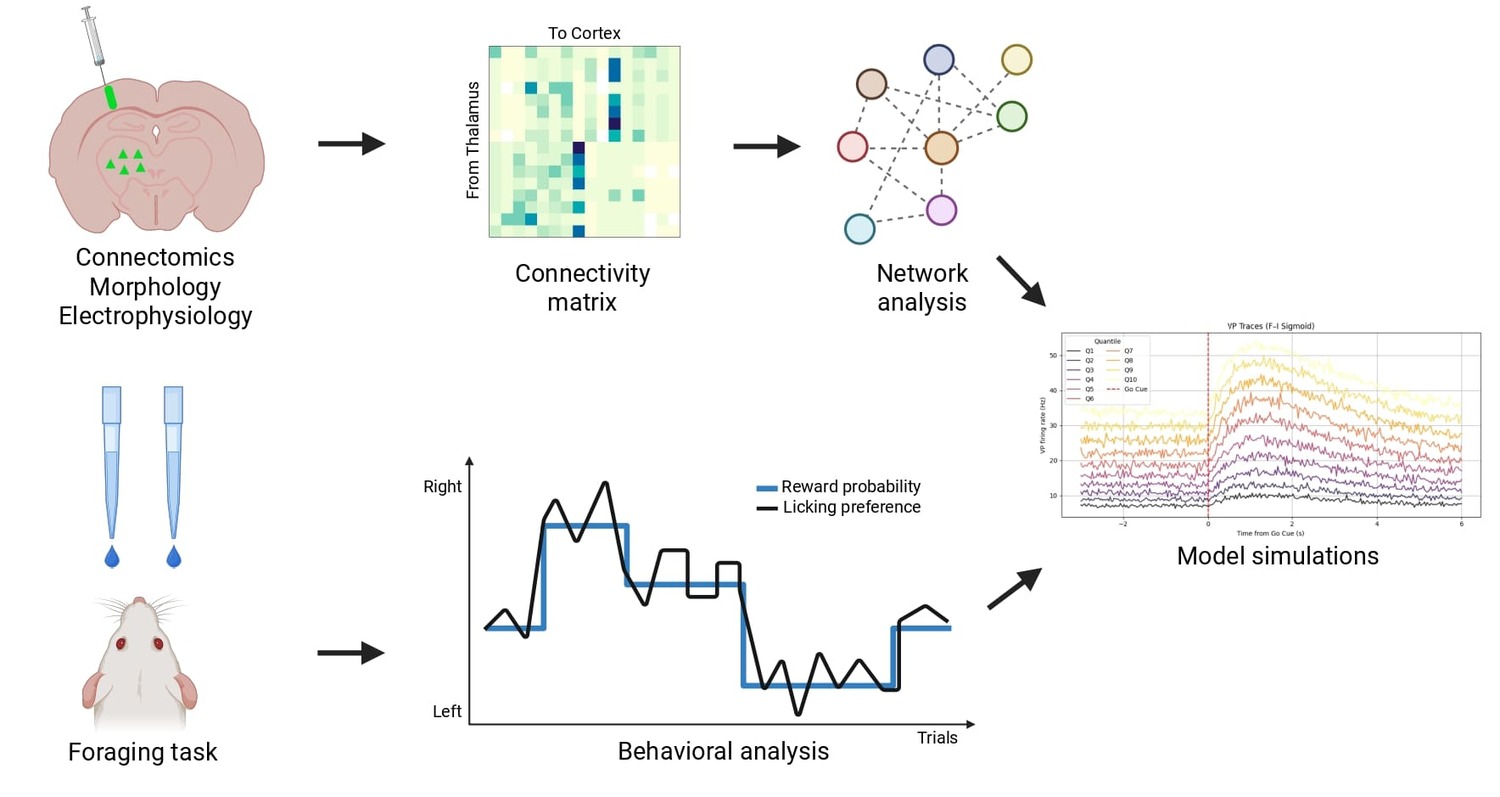
OpenScope Steering Committee
The OpenScope Steering Committee convenes at least biannually to provide crucial direction for the OpenScope project, playing an essential role in ensuring that we effectively serve our broader community.





















